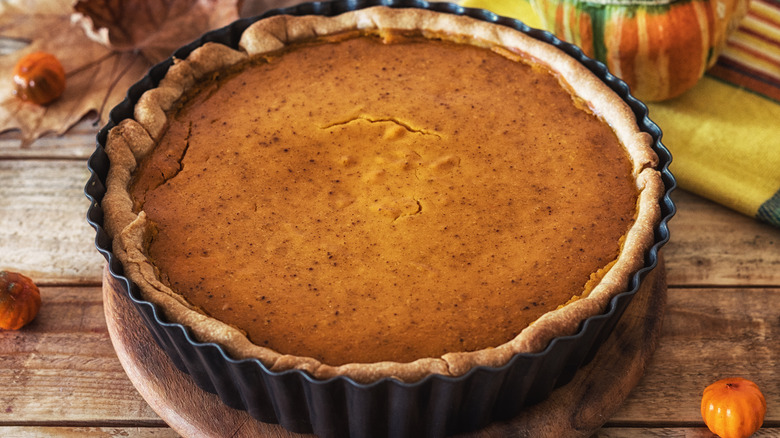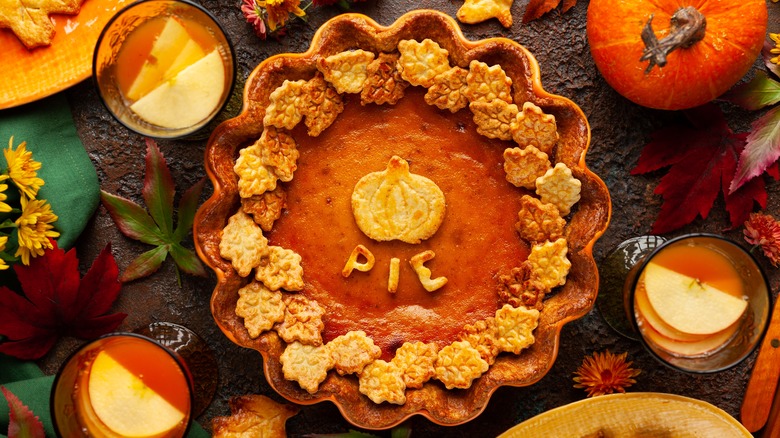How To Deliciously Disguise A Cracked Pumpkin Pie
Autumn is when pumpkin gets its time to shine, flavoring everything from lattes to the classic Thanksgiving dessert: pumpkin pie. Though its simplicity is part of its appeal, a cracked pie won't earn you the "oohs and ahhs" you deserve. But don't fret; there are several delicious ways to disguise the mistake so no one knows. Just channel your inner Julia Child and remember, "No matter what happens in the kitchen, never apologize."
Instead of offering whipped cream on the side, pile it on top of the cracks. Smear the cream with a spoon for a rustic look, or pipe it for a fancier presentation. Remember, if you're not serving the pie within two hours, add a stabilizer like gelatin or mascarpone to prevent the whipped cream from weeping. Similarly, a glossy meringue would compliment the pie and hide any blemishes.
If the pie crust is homemade, roll out the scraps and use small cookie cutters to create a design that will strategically cover any fissures. A natural choice this time of year would be leaves, but you can also use letters to spell out a message.
Hide the cracks and add texture by placing crushed cookies, like biscotti or Nilla Wafers, on top. Streusel is another option. Bake a mixture of butter, sugar, oats, and flour to garnish the cooled pie. Then, give it a dusting of powdered sugar before serving. Whether you disguise the whole pie or individual slices, it can be our secret.
How to prevent pumpkin pie from cracking
Although you might not mind the imperfections after employing these hacks, overbaking is usually the culprit behind a cracked custard. Since the pie continues to cook after removal from the oven, its center should still be jiggly and slightly sunken when done. As the custard cools, it will firm up and level out. Baking until the center sets will overcook the eggs, causing them to contract and create cracks, starting along the edges and eventually reaching the center.
Now that you know what to look for, make sure your oven isn't working against you. Verify its accuracy with an inexpensive thermometer placed on a rack. If it's hotter than expected, either lower the temperature or have the oven professionally calibrated. Also, bake the pie on the lower shelf to allow the bottom crust to benefit from direct heat, while the custard bakes gently.
Sometimes, a pie looks perfect coming out of the oven, only to form fissures as it cools. It's cruel! The issue could be overbaking or rapid cooling. Allow the pie to reach room temperature before refrigerating to avoid this.
Ideally, the pumpkin pie filling should register between 160 and 170 degrees Fahrenheit. If you're uncertain, use a digital thermometer to check. Should you need to poke a hole in the center, you can always use one of these delicious tricks to disguise it.


